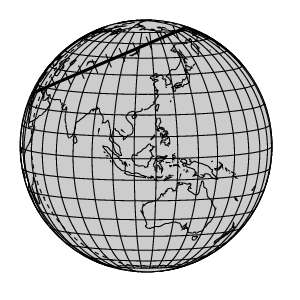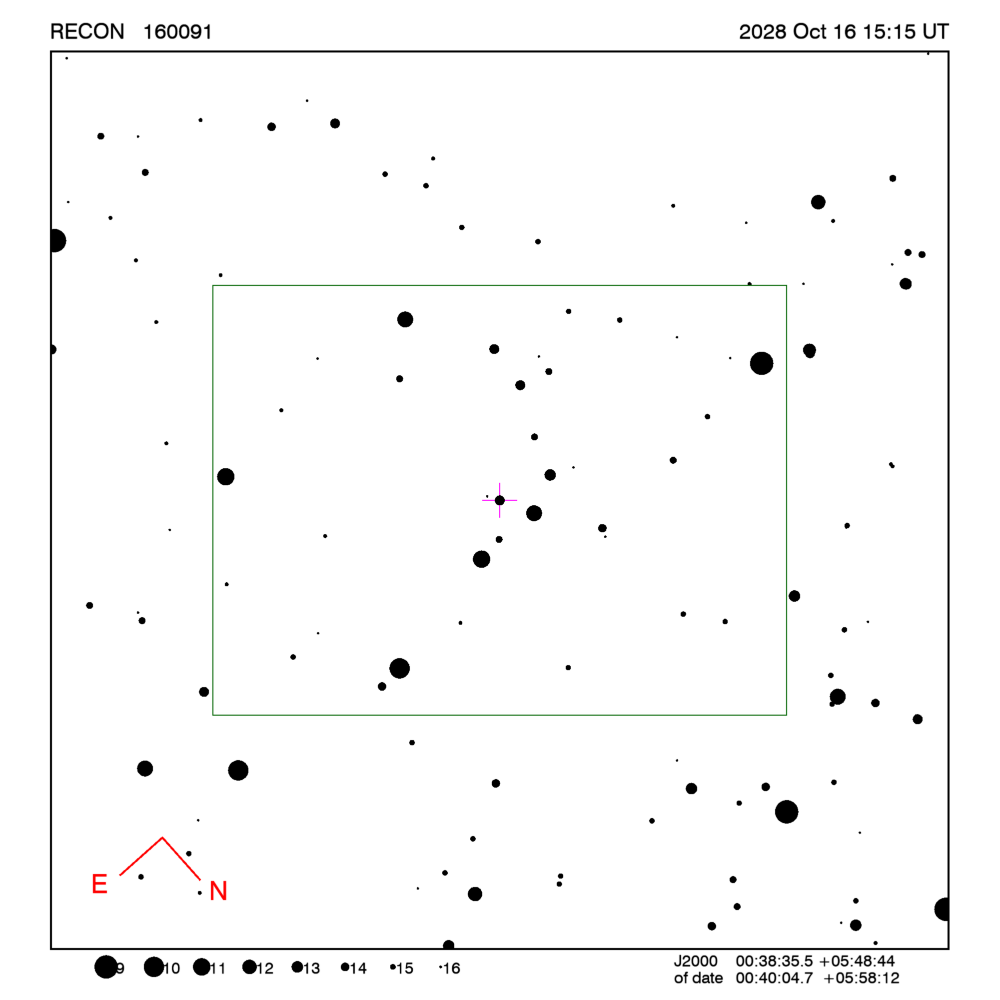RECON: TNO occultation with 160091
Event between (160091) 00OL67 and star GA0940:00059652
with event index number of 2426403
Geocentric closest approach at 2028/10/16 15:14:27 UTC
J2000 position of star is 00:38:35.5 +05:48:44
Equinox of date position of star is 00:39:49.8 +05:56:37
Stellar brightness G=13.7,
use SENSEUP=64 with the MallinCam and and exposure
time of 1 seconds with the QHY174 camera.
Star is 171 degrees from the moon.
Moon is 4% illuminated.
Apparent brightness V=23.5
 Object is 45.0 AU from the Sun
and 44.1 AU from the Earth.
Object is 45.0 AU from the Sun
and 44.1 AU from the Earth.
Apparent velocity is 24.7
km/sec on the sky relative to the star, or,
2.8 arcsec/hr.
The 1-sigma error in the time of the event is 330 seconds.
The 1-sigma cross-track error in the shadow position is
4649 km.
The object has an absolute magnitude Hv=7.0
Diameter=244.4 km assuming a 5% albedo -- 9.9 sec chord
Diameter=99.8 km assuming a 30% albedo -- 4.0 sec chord
Dynamical classification is CLASSICAL
Star training set for 160091, (2028/10/16 15:15UT)
Object RA Dec mag sep mel
Algenib 00:14:43.3 +15:20:37 2.8 11.25 170
96 G. Psc 00:49:53.4 +05:25:48 5.8 2.50 169
PPM 143680 00:38:26.3 +05:34:15 8.2 0.57 171
PPM 143708 00:39:30.5 +06:00:20 9.8 0.15 171
160091 00:40:04.7 +05:58:12 13.7 171
Positions are for equinox of date

Azimuth is measured in degrees eastward from north.
North is at an azimuth of 0, due East is at an azimuth
of 90 degrees, due South is 180, and due West is 270.
Do not use the listing below for the RECON CPC 1100 telescopes.
This is provided for other non-team facilities.
Star training set for 160091, (2028/10/16 15:15UT)
Object RA Dec mag sep mel
Algenib 00:13:14.2 +15:11:01 2.8 11.25 170
96 G. Psc 00:48:24.1 +05:16:25 5.8 2.50 169
PPM 143680 00:36:57.2 +05:24:45 8.2 0.57 171
PPM 143708 00:38:01.2 +05:50:52 9.8 0.15 171
160091 00:38:35.5 +05:48:44 13.7 171
Positions are for J2000
Event circumstances last updated at 2023/12/24 04:43:34 UT
Marc W. Buie,
Southwest Research Institute
RECON
 Object is 45.0 AU from the Sun
and 44.1 AU from the Earth.
Object is 45.0 AU from the Sun
and 44.1 AU from the Earth.
